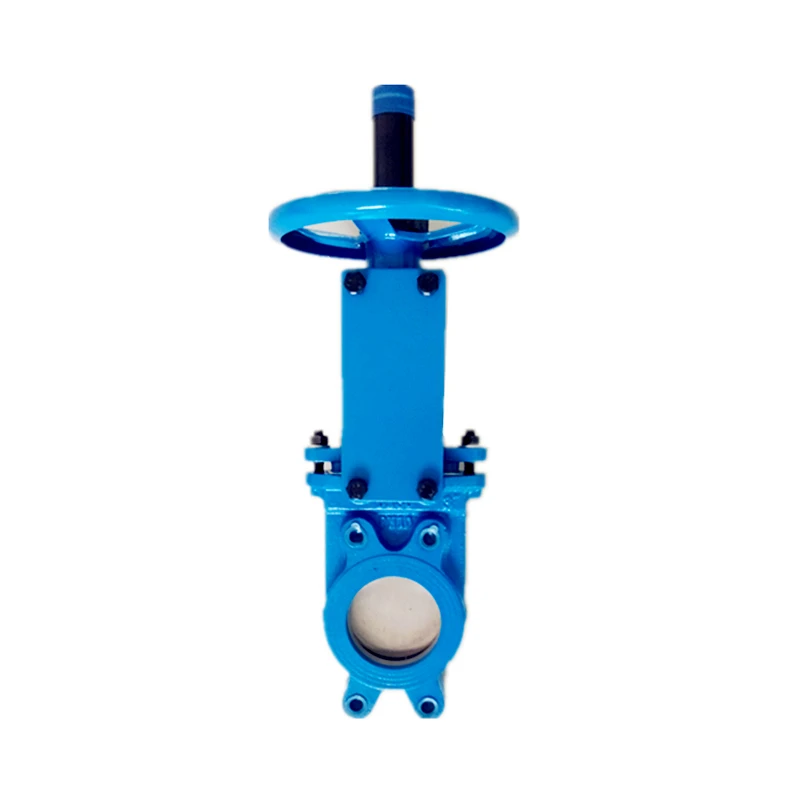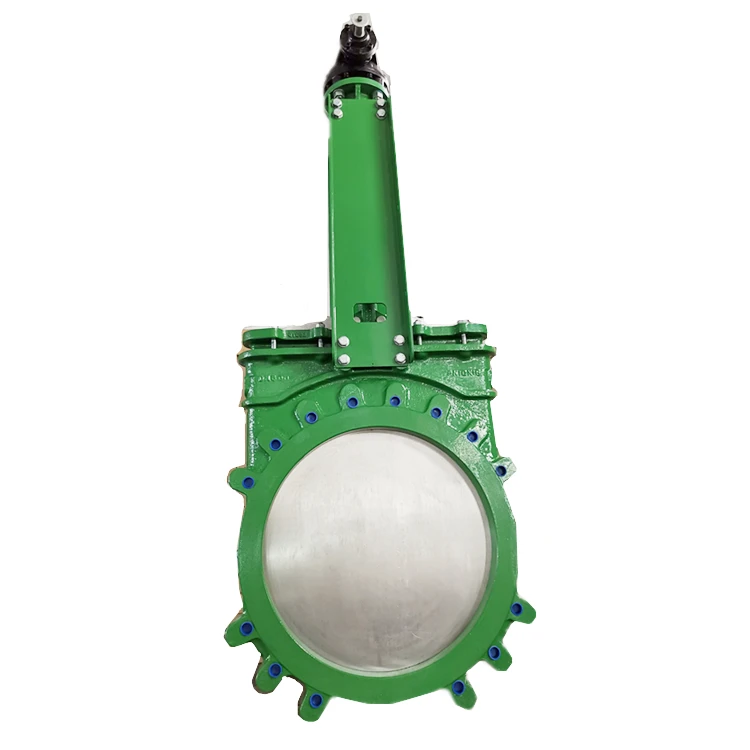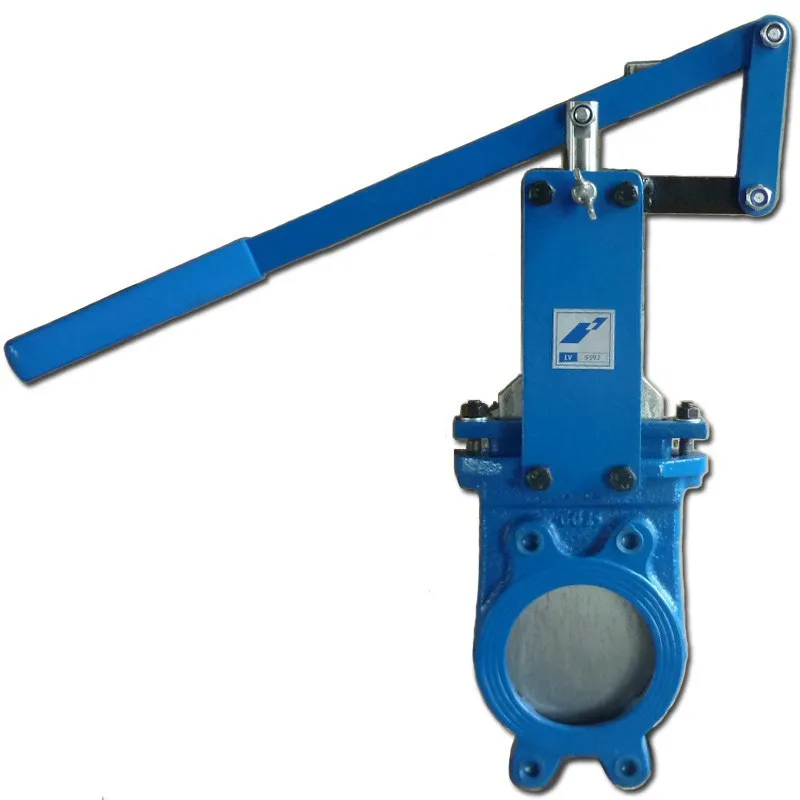Knife Gate Valve Overview with Electric Actuator and Flow Control
Key Takeaways
The knife gate valve is an essential component in various industrial processes, particularly in flow control applications. Its unique design allows for effective regulation of fluid movement, making it suitable for both on-off and throttling services. The integration of an electric actuator enhances operational efficiency, enabling remote and automated control. This setup not only streamlines processes but also accommodates precise adjustments to flow rate and pressure. Understanding the operating principles of the knife gate valve, including how the electric actuator interacts with the gate mechanism, is crucial for optimizing system performance. Additionally, considerations regarding flow direction are paramount; these valves can be configured to handle flow from either side effectively, which adds to their versatility in diverse applications. Images depicting various models and configurations of knife gate valves can assist engineers and technicians in selecting the appropriate design for specific operational needs, especially in regions like India, where industrial growth is driving demand for such equipment. The functionality, along with the visual understanding provided through images, ensures that professionals can make informed decisions when integrating knife gate valves into their systems.
Knife Gate Valve Mechanism and Operation with Electric Actuator
The knife gate valve is a robust solution primarily used for controlling the flow of liquids and slurries in various industrial applications. The mechanism of this valve comprises a sharp-edged gate, which functions by sliding vertically into the flow stream. When activated, the gate's acute design efficiently cuts through any suspended solids, ensuring minimal obstruction in the pipeline. Incorporating an electric actuator enhances its operation, allowing for precise control over the opening and closing of the valve. This automation reduces manual intervention, increasing reliability and operational efficiency.
The electric actuator connects directly to the valve stem, translating electrical signals into mechanical movement. This automation allows for remote management and integration into broader control systems, catering especially to operations requiring large-scale flow adjustments. The data collected through sensors associated with these electric actuators can provide real-time feedback regarding flow rates and valve status, directly influencing system performance.
In addition to effective operation, understanding its application in different flow directions is crucial. The knife gate valve can be installed in both horizontal and vertical pipeline runs, depending on service requirements. Proper installation ensures that the wave of fluid movement enhances the cutting capability of the knife during operation.
Parameter | Specification |
|---|---|
Size Range | 2" to 48" |
Pressure Rating | Up to 150 PSI |
Material Options | Stainless Steel, Carbon Steel |
Actuator Voltage | 24V DC or 110V AC |
Temperature Range | -20°F to 250°F |
"Proper installation and selection of electric actuators significantly enhance the operational life and efficiency of knife gate valves."
With a focus on diverse applications, especially in India’s growing industrial landscape, these valves are pivotal for managing fluid flow in wastewater treatment plants and mining operations. Their robust design coupled with advanced automation creates opportunities for improved process streamline in various sectors.

Understanding Flow Control Mechanisms in Knife Gate Valves
Knife gate valves are critical components in managing the flow of various fluids within industrial systems. The knife gate valve operates with a sharp, wedge-like blade that cuts through the flow, ensuring minimal resistance when fully opened. This design is particularly advantageous for handling slurries and viscous fluids due to its effective sealing capability and ability to handle high flow rates. The integration of an electric actuator enhances the control of these valves, allowing for precise operation. The actuator automates the opening and closing process, which is vital in applications requiring frequent adjustments to flow.
Flow control mechanisms in knife gate valves involve careful consideration of several factors, including pressure, temperature, and the nature of the medium being controlled. The ability to manipulate these factors ensures that operations remain efficient and safe. Knowledge of flow direction is also essential; these valves are designed for one-way flow to prevent backflow and contamination within systems. Understanding these dynamics contributes to effective system design and operational reliability in various sectors such as water treatment plants, mining operations, and chemical processing industries.
Images illustrating the diverse applications of knife gate valves can be beneficial for visualizing their functionality in real-world settings. In India, these valves have gained prominence across multiple sectors due to their durability and efficiency. With a focus on enhancing performance through technological advancements like electric actuators, knife gate valves represent a reliable solution for contemporary industrial challenges.

Flow Direction Considerations for Knife Gate Valve Applications
When selecting a knife gate valve for industrial applications, understanding the flow direction is crucial to ensure proper functionality and efficiency. Knife gate valves are designed to provide shut-off capabilities in systems handling various materials, including slurries and solids. The orientation of the valve affects not only the flow characteristics but also the performance and lifespan of the valve itself. Proper installation in alignment with the intended flow direction is essential; a valve installed improperly can lead to increased wear, potential system failures, and safety hazards.
For applications involving reverse flow or misaligned installation, manufacturers often recommend features such as backflow prevention, allowing users to manage undesired flow directions effectively. Additionally, considerations regarding the electric actuator also depend on these flow dynamics. If a knife gate valve is paired with an electric actuator, awareness of how the actuator interacts with both flow characteristics and torque requirements becomes vital.
In regions like India, where industrial applications can vary widely, knowledge of local material handling practices helps in selecting suitable knife gate valves that accommodate specific needs while aligning with established flow direction guidelines. Proper analysis during design and implementation phases leads to enhanced operational efficiency and reduced maintenance costs over time.
Visual Guide: Knife Gate Valve Images and Their Uses in India
Knife gate valves play a pivotal role in the management of flow control across various industries. Their design features a sharpened gate that slices through the flow of media, ensuring minimal turbulence and efficient sealing. In India, these valves are widely employed in sectors such as water treatment, mining, and power generation due to their robustness and reliability. Images showcasing knife gate valves reveal their distinctive characteristics, including the actuator connections and body designs that cater to different operational needs. The integration of electric actuators enhances their functionality by providing precise control over the opening and closing actions. This automation simplifies remote operations, allowing for greater efficiency in facilities handling large volumes of liquids or slurries. Understanding the proper flow direction is vital for optimizing performance and preventing backflow improperly aligned within a system. Each application may require specific configurations; thus, visual representation helps engineers select the right design for their needs. The evolving landscape of industrial requirements in India continues to drive the demand for these essential components, affirming their importance within modern infrastructure developments.
Conclusion
The implementation of knife gate valves equipped with electric actuators signifies a notable advancement in flow control systems. These valves allow for precise management of fluid flow in various industrial applications, showcasing their efficiency and reliability. The operational mechanism of knife gate valves is particularly advantageous when dealing with slurries and coarse materials, where traditional valve types may falter. The flow direction capabilities further enhance their versatility, ensuring optimal performance across diverse processes. The visual representations accompanying this overview illustrate the design and functional characteristics of these valves, aiding stakeholders in making knowledgeable decisions regarding their use in specific applications. As the demand for effective flow management solutions grows within various sectors, particularly in regions such as India, understanding the intricacies of knife gate valve operations with electric actuators becomes essential for operational excellence.

FAQs
What is a knife gate valve and how does it work?
A knife gate valve is a type of valve used to control the flow of fluids or slurry through a pipeline. It features a sharp-edged gate that can cut through solids in the flow, providing efficient sealing when fully closed.
What are the advantages of using an electric actuator with knife gate valves?
Utilizing an electric actuator allows for precise and automated control over the opening and closing of the valve. This enhances operational efficiency by reducing manual labor and minimizing response time for flow adjustments.
How do knife gate valves assist in flow control?
Knife gate valves are designed to provide effective flow control, making them optimal for applications involving thick sludge or slurry. The design allows operators to manage fluid dynamics efficiently, preventing blockages and ensuring smooth flow.
What considerations should be taken into account regarding flow direction in knife gate valve applications?
Understanding flow direction is critical for achieving maximum efficiency in knife gate valve applications. It is essential to install the valve in accordance with the manufacturer's specifications to prevent complications from reverse flow that can affect performance.
Are there specific images or diagrams available that showcase knife gate valves?
Yes, numerous images and diagrams illustrate various types of knife gate valves, showcasing their construction, installation methods, and operational configurations. Such visual aids enhance comprehension of their functionalities and applications.
What role do knife gate valves play in various industries in India?
In India, knife gate valves are widely used across industries such as wastewater treatment, mining, and pulp and paper production. Their robustness makes them suitable for handling abrasive materials while maintaining reliable service under challenging conditions.




